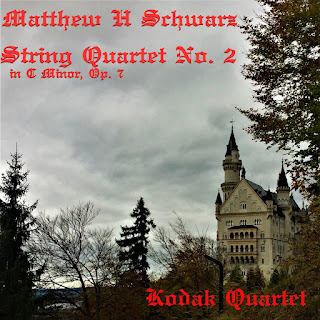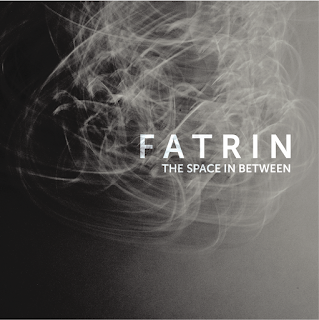Hugi Guðmundsson - "Windbells" album review
Hugi Guðmundsson - Windbells Album Review
As an album, Windbells is an excellent example of a contemporary composer's views on traditional senses of tonality in the twenty-first century.
Windbells is Icelandic composer Hugi Guðmundsson's third portrait album, this time showcasing music for chamber ensemble, electronics, and voice. Centered around Guðmundsson's perception of musical time, it is interesting to listen how the album represents almost twenty years of compositional output. Windbells was recorded in November of 2021 and was released late this September through the Sono Luminus label (click here for purchase information). The album features the incredible musicians of the Reykjavík Chamber Orchestra, as well as flute soloist Áshildur Haraldsdóttir, and mezzo-soprano Hildigunnur Einarsdóttir.
The opening track on the album, Entropy, for flute, clarinet, cello, and piano, presents similar musical material in two contrasting movements. The first, "Arrow of Time", is short, fast, in a simple ABA form, and almost shimmering in perpetual motion. It is fascinating how Guðmundsson's use of repeated pulsations never imply aggression, only movement. The second movement takes up more space, and is Guðmundsson's literal way of using the same material in 'a higher state of entropy'. "Asymmetry of Time" feels even more sparse after leaving the denseness of the first movement. While a seemingly simple conceptual idea, Guðmundsson is quite successful in his musical depiction of entropy.
Haraldsdóttir is the flute soloist on the next work, Lux, a ten minute journey for solo flute and electronics. While initially composed for solo flute and a large flute choir, Guðmundsson later reworked the piece, resulting in an awkward limbo of whether the additional modified electronic sounds are needed, or simply get in the soloist's way. The piece takes a long time to build, and only in the last minute and a half of continual playing Haraldsdóttir get to show off her virtuosity.
The titular track on the album, Equilibrium IV: Windbells, is also the oldest, hailing from 2005. The four movement chamber work for bass flute, bass clarinet, violin, cello, guitar, piano, and electronics pulls from a vast array of influences according to the composer. Right away, Guðmundsson shows off his incredible sense of orchestration for the unusual ensemble, blending sounds and noises with the interactive electronics. He further expands his range of usable sound with microtonal soundscapes in the final movement. Also of note is the especially complex and difficult writing for classical guitar. Often overlooked in contemporary chamber writing, Guðmundsson takes full advantage of the instrument, and guitarist Guðmundur Pétursson does a phenomenal job bringing the piece to life.
Brot, for flute, clarinet, violin, cello, double bass, and electronics, explores short musical fragments and finds a new way to approach time. The five short movements alternate between acoustic pieces and electronically dominated intermezzos, where the material is comprised of recordings of the previous movement played backwards. The first movement, "Ostinato", is a short, fun listen based around a funky groove. The only movement which is out of place is the last, "Danse Macabre". By itself it is musically sound, but sounds amateur and kitsch within the context of the larger work.
To close off the album, Guðmundsson presents a large song cycle for mezzo-soprano and chamber ensemble, setting ancient Icelandic text from the thirteenth century. Songs from Hávamál II is some of the most lush and beautiful writing on the album. Guðmundsson combines his love of old and new music. Each of the five songs sets up a new sound world, with Einarsdóttir's lyrical voice bringing a new definition of expressivity to all of them. Her diction and phrasing combined with Guðmundsson's vocal writing enables the old Icelandic poem to sound completely natural.
As an album, Windbells is an excellent example of a contemporary composer's views on traditional senses of tonality in the twenty-first century. Guðmundsson's music traverses an array of emotions and inspirations, but always eventually comes back down to the simple beauties created in life. His writing is both intuitive and innovative for the players, not shying away from complexity, but also not relying on it as his only source of musicality. The chamber music presented are also great examples of how successfully electronics, especially interactive electronics, are vital to the progression of new music.
Be sure to like, follow us, and comment your own thoughts!





Comments
Post a Comment